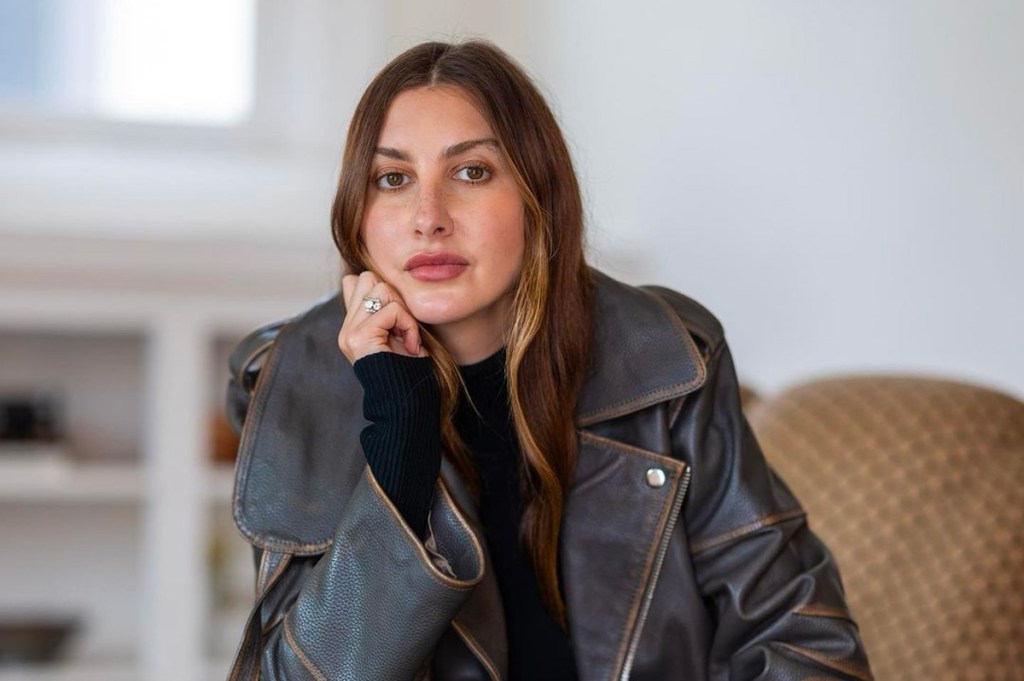That Allison Bornstein’s family all operate in care is no surprise.
True, Bornstein, thirty-five, a stylist and rising social media star based out of New York and Los Angeles, is the odd one out. Her father and brother are doctors, her grandfather is a psychoanalyst and her mother was once a therapist.
But the services she offers are not so different from the shrink’s couch. Bornstein has created a dedicated following on TikTok and Instagram for her tips and scripted reels, in which she implores us all to craft self-love around our clothes.
To slow down, shop less, and style more.
And in the world of stylists and influencers, who make careers out of telling people to consume, consume, consume, Bornstein is quietly radical.
“The most sustainable thing you can do is wear what you have,” Bornstein asserts when we talk over Zoom, a week after the crowded Manhattan launch of her debut book Wear It Well: Reclaim Your Closet & Rediscover the Joy of Getting Dressed.
In her book, Bornstein elaborates on the tools and techniques that have positioned her as the Marie Kondo of fashion: the AB Closet-Editing System (donate what you no longer need; organize what you already have), Shop Your Own Closet (create new styles from your own wardrobe, rather than buy new things) and the Three-Word Method (more on that later).
They all amount to the same idea: that less is more. In the Bornstein universe, honing an individual style is not about how many clothes you have but how you put them together. It’s hard work and takes focus and purposeful editing. There is no such thing as “effortless” or “I just woke up like this” style, despite what the cool-girl aesthetic tells us.
What’s more, when we have too much — when we are swamped by the clothes we no longer wear but can’t bear to get rid of; when we make rash purchases or go binge-shopping in sales; when we feel pressure to always have a new outfit for a new occasion; when we spend our hours and days trawling Instagram, wanting, wanting, wanting — we lose ourselves.
“We’re not spending time on the right things,” says Bornstein, who wears her straight, dark-blonde hair parted in the middle and is dressed in a silky black button-down and layers of chunky necklaces. “We’re spending time shopping and acquiring but we’re not spending time [on] how to style it. It’s taking the time, working with what you have, being a bit more analytical.”
While Bornstein does some brand collaborations, most of her income is derived from her styling sessions with ordinary people, which she conducts over Zoom.
Many clients (she is fully booked until next February) are women in transition. New moms whose bodies, identities and lifestyles have changed. Retirees. Corporate workers who no longer go to the office. Breast cancer survivors with double mastectomies.
To help, Bornstein created the viral Three-Word Method. The concept is to find three words that sum up your own unique style. The first word should encapsulate your regular wardrobe; the second should be aspirational; and the third is an emotional word — how do you want your clothes to make you feel?
Bornstein’s three words are classic, Seventies and elegant. Alexa Chung’s, she says, are tough, whimsical and preppy. Kaia Gerber’s are tailored, classic and sporty. The three-word method is meant to be fun — it’s not set in stone and can, of course, shift and change as you do. But its main purpose is simple: to keep you focused. You can love that Suki Waterhouse is rock ’n’ roll personified, but that doesn’t mean you have to rush out and buy leopard print pants.
Bornstein understands that we are facing unique challenges. In the post-Covid world, fashion has dramatically shifted, with a bent to the more comfortable and casual. But, at the same time, we have never had more opportunities to compare ourselves to others, as we are endlessly bombarded with online images and online shopping. The result is that many women feel less than. And more than a little lost.
“Oftentimes we’re looking so outward, we’re looking at other people’s outfits. We have to remember: what do I actually like? What does my closet actually look like? How do I center myself? Once you’re able to take the time to have a better understanding of who you are, you can look outward and appreciate [other people], but you don’t have to grab it. You feel safe.”
When Bornstein deconstructs her own outfits on Instagram, she doesn’t put up links telling people where the clothes are from (even though they could earn her a fee). Instead of copying and pasting, she would rather her followers find out what works for them. “I didn’t post this [outfit] so you can have the same thing,” she explains. “I posted this so you can get an idea about how to style it with what you have.”
Seeing an influencer, rushing to buy the same clothes, and then realizing it doesn’t quite work just makes people feel downright bad, she says. And — contrary to what we so often see online, where newness is fetishized — repeating outfits using regular formulas and creating a signature look, is potent. “To open your wardrobes, to see yourself in there, to actually see your style is really powerful,” she says.
To curb the urge to spend, Bornstein has crafted seven questions to ask before you whip out the credit card. These include, “Will this make getting dressed easier?”, “Do I have something that serves the same purpose?” and “Can I see myself wearing this in a year?”
Everything we have should be an investment piece, valued not for how new it is or for how much it costs, but by how much time and care we invest in it. A simple white shirt can be an investment piece if we love it, care for it and know how to style it. Disposable fashion is bad for everyone: the planet as well as the wearer. Clothes should be lived in and loved, part of our everyday lives, not archival pieces or novelties.
Bornstein’s grandfather — who still sees patients at the ripe old age of ninety-one — has noted his granddaughter is “helping [people] in a way that feels like therapy.” Bornstein is reminding us that clothes should feel good, not performative. It is a shift away from the cutthroat Devil Wears Prada mentality towards something cozier, gentler, more authentic and liveable.
“Fashion is a creative pursuit but also it’s so public,” recognizes Bornstein. “My hope is that people see fashion as something that is fun and expressive and affable, as supposed to something that is so foreign and confusing. You can participate. Fashion is for you.”
Wear It Well: Reclaim Your Closet & Rediscover the Joy of Getting Dressed by Allison Bornstein is out now.

























